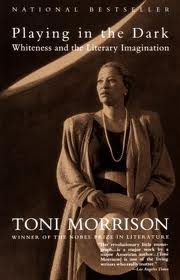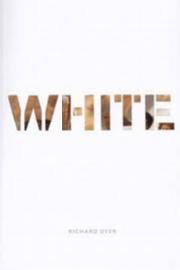Sarah Halford
Hello, thank you for visiting my page. I am a doctoral candidate in the English department at Warwick and my thesis, supervised by Dr Emma Francis, is on the subject of 'whiteness in Victorian English fiction' (please see below for an introduction and brief chapter synopses). I am fortunate enough to have studied all of my degrees in the English department here at Warwick. I began with a part-time BA (hons) Literary & Cultural Studies in 1992, which I completed in 1998 with a 2:i. I returned to Warwick in 2007 to do my MA, which I got with distinction in 2009, and began my PhD in 2010. I am interested in all aspects of Victorian literature, culture and art, as well as post-colonial and feminist literary theory.
I am also an NCTJ qualified journalist with 19 years' experience in newspapers and magazines and in my 'spare' time I am still a feelance journalist, editor and subeditor. I have held posts at senior levels including Group Managing Editor, working on magazines covering diverse subject areas, from Art of England magazine to Calibre, a men's luxury lifestyle publication.
My Research
Whiteness in Victorian English fiction: thesis abstract
This thesis explores representations of whiteness in Victorian English fiction, from the mid-century novels Wuthering Heights by Emily Bronte and Charlotte Bronte’s Villette, to Florence Marryat’s The Blood of the Vampire, 1897. Pioneering critics such as Edward Said and Gayatri Chakravorty Spivak inaugurated a rich field of inquiry deciphering myriad ways in which 'race' and empire are codified in nineteenth-century texts. Despite the recognition that 'Western' and 'Oriental' iconographies are symbiotic, however, there remains a dearth of engagement with representations of whiteness; ‘race’ has become synonymous with 'blackness', leaving whiteness largely untheorised as a racial category. I take as my starting point Richard Dyer’s argument in his 1997 text White, that it is precisely the invisibility of whiteness that secures its power to colonise definitions of the norm (143).
My thesis aims to reinstate whiteness as ethnicity and to take up Toni Morrison’s famous gauntlet in Playing in the Dark: Whiteness and the Literary Imagination, that we must make “a serious intellectual effort to see what racial ideology does to the mind, imagination, and behavior of masters” – in short, to explore “the nature – even the cause – of literary “whiteness”” and to ask, as Morrison does, “What is it for?”; what is whiteness for English Victorians and what does it do; how do they imagine themselves as white and what do they think of their own whiteness? (9). I explore the ways in which 1847-1897 texts negotiate the paradoxes, contradictions and bewilderment intrinsic to whiteness and the ways in which its volatile iconographies are reworked under shifting historical conditions. Many critics have explored the ways in which empire haunts English novels by cherished authors such as the Brontes, not only as a convenient plot device but also as a constellation of discursive practices, rhetorical figures and tropes, for instance black slavery and Oriental despotism. However, tropes of 'blackness' are often used to critique white characters and institutions: whiteness, its power dynamics and the instabilities and anxieties it denies are thereby defamiliarised and made visible.
In recent years critical work has burgeoned on the re-emergence of the ‘gothic’ at late-century, which re-surfaced in the context of a host of newly-authorised scientific discourses and has an intensified focus on race. One of the central figures of this reincarnated gothic is a new breed of vampire, of which the most iconic is, of course, Bram Stoker’s Dracula, who has been the subject of intense scholarly interest. Marryat’s text, however, a strikingly explicit articulation of these ideologies, has received scant attention. Although much vampire criticism has highlighted the figure’s horrific alterity, I argue for the terrors of its familiarity, its extraordinary whiteness.
Dyer, Richard. White. London; New York: Routlege, 1997.
Morrison, Toni. Playing in the Dark: Whiteness and the Literary Imagination. Camb. Mass: Harvard University Press, 1992.
Work in progress: provisional chapter titles and synopses
Chapter 1:
“Ancient stock” and “eternal rocks”: Emily Brontë summons the Goths in Wuthering Heights (1847)
This chapter argues that the experience of whiteness as represented in Brontë’s novel is a vertiginous one. I examine the significance of two dates Brontë specifies – 1801 and 1500 – as pertinent to mid-nineteenth century constructions of white modernity and to the racial politics of the novel. I explore Brontë’s engagement with the contemporary resurrection of Anglo-Saxonism and the summoning of the mythological Goths as part of a new narrative of white racial continuity to negotiate the anxieties and desires of the mid-Victorian era, a process which becomes increasingly fraught and returns to haunt the rest of the century.
Chapter 2:
“Of what are these the signs and tokens?” White interiors in Charlotte Brontë’s Villette (1853)
In this chapter I explore the concept of white interiority, as new, interconnected concepts of the self and subjectivity and privatised domestic interiors emerge simultaneously in the first half of the century. With a new fusion of home and human, the emergence of a spiritualised private domestic ideal and, paradoxically, a commodity culture through which to display it, objects of all kinds not only begin to delimit white identity but become constitutive of it. If identity inheres in objects from houses to picture frames, which consequently take on a life and agency of their own, the ‘human’ itself becomes objectified and the barrier that divides subject/object; interior/exterior, mind/body, animate/inanimate and so on, becomes perilously permeable. The mutability of such boundaries challenges the very existence of a transcendent interiority definitive of white humanity. Whites are caught vertiginously between a rock and an insubstantial place – they are either all spirit or all body – and both prospects are terrifying.
Chapter 3: England’s got taste: Florence Marryat’s The Blood of the Vampire (1897)
This chapter explores a newly intensified – and newly feminised – late-century consumer culture in which ‘taste’ becomes more fully the arbiter of white identity, racial ‘blood’ in a new guise. Blue blood has been replaced by the new blood of the nouveux riches and whiteness inheres in a set of intricately complex rituals – in commodities; behaviour, speech, consumption and many others – and either failure or excess in any of a dizzying array of minutiae can spell disaster. Furthermore, it was women who were tasked with both reproducing the race in a biological sense as well as in consuming the objects that ‘spoke’ white identity. Since they were suspected of fickleness, irrationality and excess in both areas – sexuality and shopping – as well as apparently demanding power as New Women, fears were rife that the future of the white race was not on solid footing. The dangers presented by Marryat’s female vampire are emphatically ‘racial’ ones, with its central character a familiar racial bogey – the mulatto with polluted black blood. Marryat engages with a newly scientised set of anxieties surrounding questions of race, origins and empire and consequently a new breed of monsters. However, I will argue that Marryat’s monsters are not simply the usual ‘other’ suspects but are whites themselves. Late-century whites may congratulate themselves on their enlightened progress beyond primitive superstition, but the Gothic barbarians they summoned for their own purposes earlier in the century have returned with a vengeance, wearing new clothes and committing ritual sacrifice.

Images of blackness can be evil and protective, rebellious and forgiving, fearful and desirable — all of the self-contradictory features of the self. Whiteness, alone, is mute, meaningless, unfathomable, pointless, frozen, veiled, curtained, dreaded, senseless, implacable. Or so our writers seem to say.
Toni Morrison, Playing in the Dark: Whiteness and the Literary Imagination
White identity is founded on compelling paradoxes: a vividly corporeal cosmology that most values transcendence of the body; a notion of being at once a sort of race and the human race, an individual and a universal subject; ... a need always to be everything and nothing, literally overwhelmingly present and yet apparently absent, both alive and dead.
Richard Dyer, White
Email S dot J dot Halford at warwick dot ac dot uk

